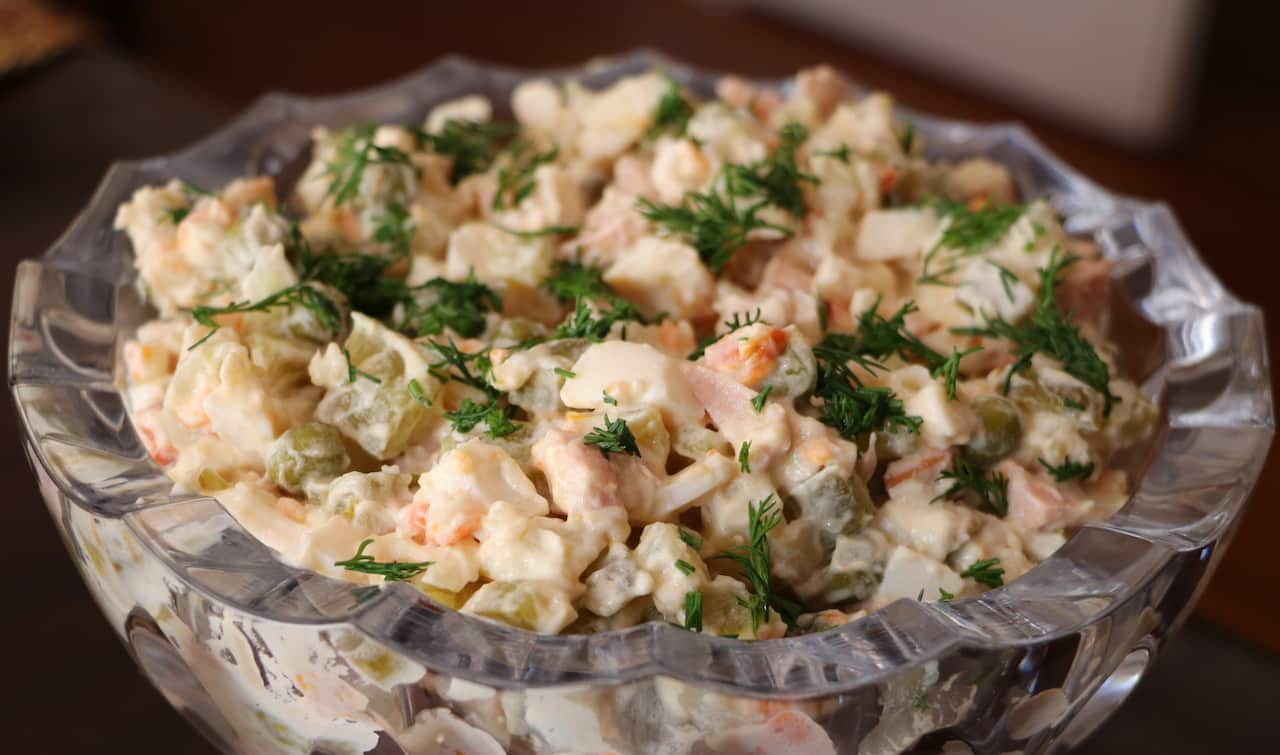Imagine growing up in Australia and thinking that soup is purple in colour. Well, that's what borscht is: a beetroot soup usually served hot with cabbage, potatoes and carrots with a dollop of sour cream. Welcome to my childhood.
I was born in Ukraine in the mid-1980s when it and Russia were part of the Union of Soviet Socialist Republics (USSR). When I was around four years old, my parents made the ultimate leap of faith and booked a one-way ticket out of the crumbling USSR to a country where the average summer temperature could heat a borscht soup. When my grandparents joined us a few years later, they tried to keep their Ukrainian and Russian food traditions alive.
BORSCHT IS A HIGHLIGHT

Little Odessa shows there’s more to Eastern European cuisine then borscht and pierogi
From a young age, I have loved to cook and I have no doubt that this comes from watching my grandmothers regularly prepare traditional meals to support my parents as they made a new life in Melbourne, Australia.
When I was a child, my late babushka Diana used to make my favourite dessert, napoleon (napolyeon) tort, for birthdays and family celebrations. It is a cake made up of over a dozen layers of homemade puff pastry with egg-yolk custard cream slathered in between. However, we gave it an Australian twist with shaves of Tim Tams to garnish the top. I fondly remember how my grandma would ask me to help finish the cake by running my index finger around the perimeter to scour the excess cream. I would diligently oblige.
If you had to explain Russian food in one phrase, it's best described as comfort, like a hug from a favourite aunt.
It's based around boiled root vegetables that can survive harsh winters, meat and fish stews, soups, heavy salads with lots of mayo and many dough-based dishes, all of which are usually accompanied by an assortment of pickled foods.
IT REALLY IS COMFORT FOOD

Piroshky will always connect me to my Baba
A meal commences with an array of entrees for people to pick at. It's followed by one large protein-based main course and finished off with cake and black tea for dessert. Some well-loved dishes served at my family's dining table include plov (lamb pilau soaked in oil), bitochki (chicken thigh either fried or crumbed like a schnitzel), zalivnaya riba (fried cod in tomato and carrot sauce), piroshky (fried dough buns with a seasoned meat filling) and olivye salad (boiled potatoes, carrots, , dill cucumbers, green peas, eggs and onions, soaked in mayonnaise). Arguably one of the strangest dishes served in Russian households is shuba, which is usually reserved for celebrations. It translates to 'herring under a fur coat' salad. I recently spent an afternoon making it with my mum and she showed me how it's essentially a salad made like a cake and served in slices.
Arguably one of the strangest dishes served in Russian households is shuba, which is usually reserved for celebrations. It translates to 'herring under a fur coat' salad. I recently spent an afternoon making it with my mum and she showed me how it's essentially a salad made like a cake and served in slices.

Olivye salad is a mix of boiled potatoes with carrot and sausage, dill cucumbers, green peas, eggs, and onion, and soaked in mayonnaise. Source: Yuri Somylar
As I raise my son, I look forward to sharing my rich heritage through language and especially food.
Shuba is made up of finely chopped pickled herring, eggs, carrots, onions, potatoes and lots of mayonnaise all wrapped in an outer layer of diced beetroot or the 'fur coat'. It takes time and effort but results in a beautiful kaleidoscope of colour and flavour.
As I raise my son, I look forward to sharing my rich heritage through language and especially food.
I can already envision him snacking on some dill cucumbers as we sit down at a table to cut vegetables and prepare shuba for an upcoming celebration, and it warms my heart like a shot of good vodka on a cold Melbourne winter's night.





